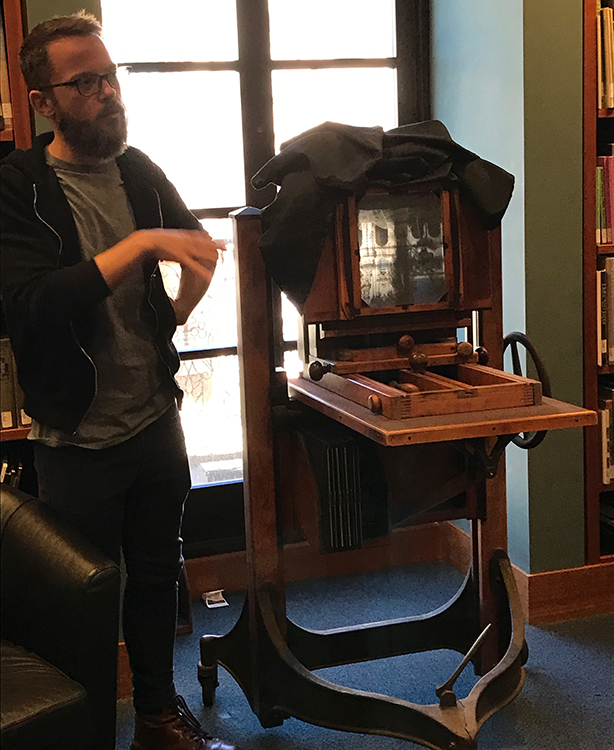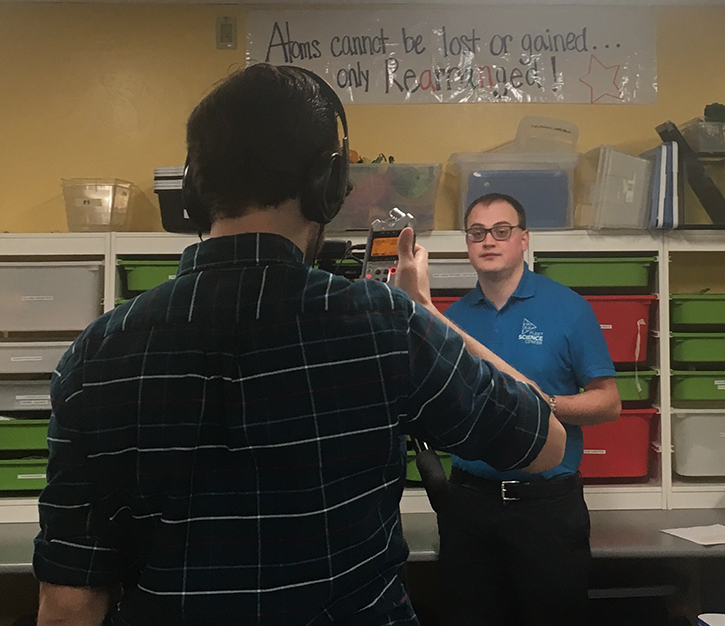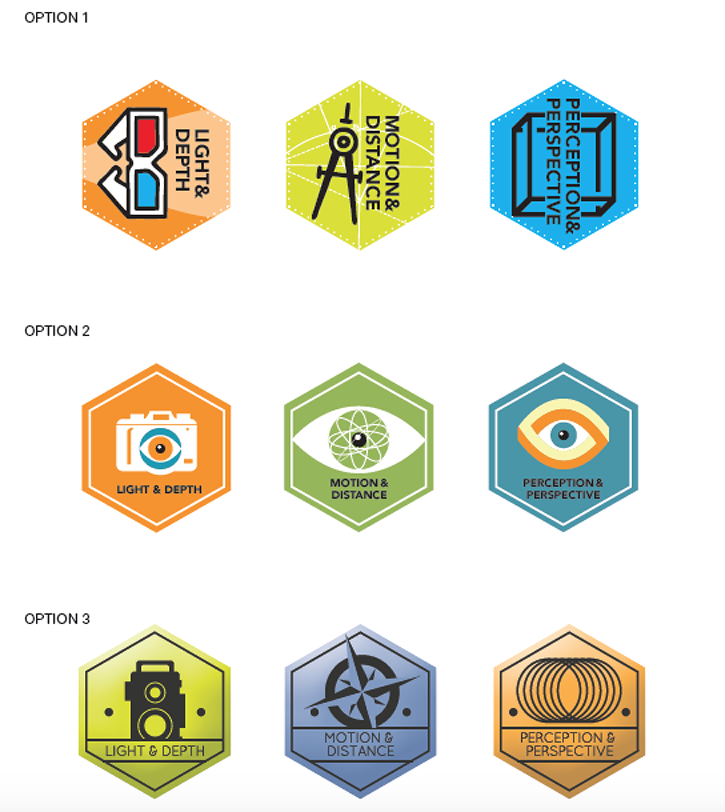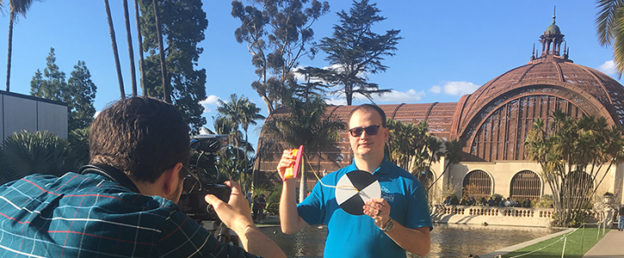Based on feedback from teens in the initial focus groups described in our first blog post, we’ve decided to rely on video, as much as possible, to convey information and instructions in our playlists. This has kept us busy over the past few weeks with script-writing, filming and video editing. After reviewing the focus group results, and with an initial plan for content laid out in our proposal, we began brainstorming about the details for how our videos would look. Based on these ideas, we worked with our museum partners to write short, engaging, informative scripts. Through the filming process, we’ve gotten to see and learn more about the museum objects and activities that the XPs highlight. The Fleet Science Center (The Fleet) taught about secchi disks, simple tools to measure water clarity. The Museum of Photographic Arts (MOPA) showed off a hundred-year-old camera obscura. The San Diego Air and Space Museum (SDASM) features the actual Apollo 9 space capsule from their collection. The project team is excited to share these objects and experiences with wider audiences and hopes their enthusiasm comes across to teens completing the related XPs.

Balboa Park Online Collaborative (BPOC) is helping each organization give their videos a unique feel that captures their organizational identity and appeals to young audiences. The Fleet videos achieve an energetic “Bill Nye the Science Guy” quality, complete with jaunty sound effects. The MOPA videos feel like a series of engaging TedTalks. The SDASM videos capture all the excitement of aviation action films, while remaining educational. Each museum has a unique style, but their videos have been designed to fit together, creating diverse, yet cohesive learning experiences. Many of the videos feature famous Balboa Park locations as backdrops and expose different aspects of how vision works and how we make it work for us. The XP text supports, complements, and reinforces the information in the videos. Drawing on the teen feedback that they’d like XPs to be useful to their future education and careers, we are emphasizing the way that understanding sight fits into careers for everyone from artists to astronomers. We are also looking at making the playlists more inclusive by including information and activities on how blind individuals complete similar tasks and experiments as those mentioned in the XPs; perhaps this will be part of a capstone experience. In the binational city of San Diego, providing Spanish-language content vitally increases accessibility. While we currently have Spanish translations of most of our content, we are still determining the best way to include it in the videos and as part of the playlist text.
In addition to the videos, the project team is collaborating on a stop-motion animation video explaining the persistence of vision—a stop-motion animation about stop-motion animation if you will. We’re also developing a video game that highlights aerial targeting from a peaceful perspective, as learners make calculations to complete aerial drops in different life-saving ways. The SDASM education team developed an in-depth game script that supplies scenarios from various points in aviation history, from delivering rations to the “lost battalion” of doughboys in WWI Germany to dropping water to fight forest fires in modern-day California. Our developer is designing and creating this game in a way that correctly captures both the scientific concepts and historical background and uses a fun classic gaming-inspired visual language.

As we produce content, we’re also thinking deeply about our badges—the criteria, qualifications, and designs. Again looking to teen responses, we hope to make these as relevant to teen future education and career goals as possible, highlighting the connections that the concepts and the skills have to real-world opportunities. As for badge designs, we have a first set of drafts and we are shaping them to complement the feel of our content, represent the Park and museums involved, fit together as a cohesive set, and match teen tastes. Based on the feedback from the teens they would appreciate physical, collectable badge items, we’re considering creating physical keepsakes for playlist completions, perhaps drawing on the trend of enamel pins.

Throughout the process, we’ve been relying on a high school intern, who is helping film, edit, and make decisions based on what she and her peers appreciate and how they like to learn. She’s given us useful feedback on everything from badge credentials to video soundtracks. We’ve also asked for feedback from high school job shadowers, who had badge preferences entirely different from what we liked and thought they would like, highlighting the importance of involving teens in each aspect of the project. We hope to bring some of our initial focus group students back to begin watching our videos and user testing our XPs, and earning badges and rewards. We plan to take their recommendations into account to perfect and polish our playlists before the end of the project period. We’ve developed a detailed schedule to guide when content must be completed in order to give our teen partners adequate time to test. Together with our partners, we’re excited about the work we’re doing, and about getting teens testing soon.
Balboa Park Online Collaborative is a DML6 Playlist grant recipient.
